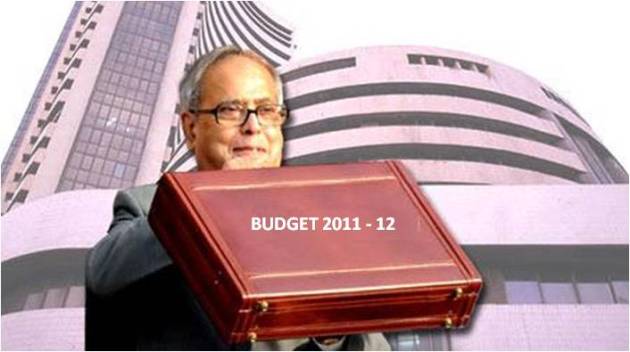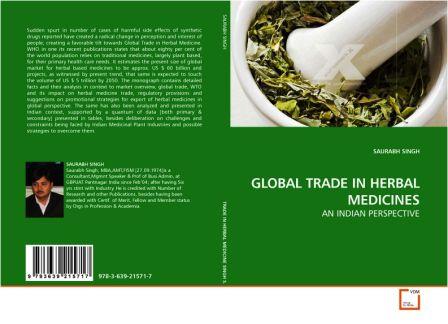It is always very difficult to have mass customization, therefore, you may find me addressing or analyzing the burning issues in the field or domain of business management/ business administration.
This is the basic reason, as to why I am going to put such an abstract item on page —— that itself has been named: Abstract(s)…………So here under are a good amount of reviews, probably the management scholars may find usefull:
It Takes a Community to Create an American Indian Business and Management Course
Muller, Helen Juliette
Journal of Management Education, Apr 2000; vol. 24: pp. 183-212
Management and business curricula have rarely addressed the subject of American Indian business and management. In response to our American Indian students, the broader American Indian community in the region, and to this neglected topic, a small group of faculty members and Native American students embarked on an experimental course at a major Southwestern university. The courses existence illustrates the intersection of culture, business, and organization. The course can be considered a postcolonial bridge between the business college and the American Indian community. This article focuses on the course context including recent tribal economic developments and the subject of culture and business. It then examines the rationale and design of the course including the content and process, participants, and the case study development format. Some course outcomes are reviewed and the implications for management education are drawn out.
————————————————————-
Organizational, Business, Management, and Corporate Communication: An Analysis of Boundaries and Relationships
Shelby, Annette Nevin
Journal of Business Communication, Jun 1993; vol. 30: pp. 241-267
This paper sets out a theory-based analysis of boundaries for four communication- focused subject areas that may be legitimately taught in business schools: organiza tional communication, business communication, management communication, and corporate communication. System, process, and product models provide the basis for the analysis. Those models were derived primarily from published definitions and taxonomies of the four areas. Such conceptual differentiation allows for a relatively objective determination of discipline boundaries and their interrelationships.
————————————————————-
Financial Management Techniques in Family Businesses
Filbeck, Greg, Lee, Sharon
Family Business Review, Sep 2000; vol. 13: pp. 201-216
This paper explores financial management techniques of family businesses. We surveyed family businesses to understand the extent to which they use capital budgeting techniques, risk adjustment techniques, and working capital management techniques. We found that more established, larger family businesses that have either an outside board of directors or a nonfamily member in the financial decision-making role are more likely than their smaller counterparts to employ sophisticated financial management techniques.
————————————————————-
Educating Leaders: Is There Anything to Learn from Business Management?
Hallinger, Philip, Snidvongs, Kamontip
Educational Management Administration Leadership, Jan 2008; vol. 36: pp. 9-31
The current focus on school leader preparation reflects the importance societies around the world are placing upon the goal of improving their educational systems. The investment of substantial new resources into leadership preparation and development activities is based upon the belief that school leaders make a difference in both the effectiveness and efficiency of schooling. Developing school leaders who do make a difference, however, requires a management curriculum that is relevant to schools, up-to-date in learning methods, and which draws upon knowledge from disciplines inside and outside of education. This article examines the implications that curricular trends in the development of business leaders may have for leadership preparation and development in education. The authors acknowledge, at the outset, that differences in the practice of education and business management require some differences in the content of preparation programs. At the same time, we argue for an integration of selected business-related understandings of organizational management that are highly relevant for the improvement of schools.
————————————————————-
What are Business Schools for? On Silence and Voice in Management Education
Grey, Christopher
Journal of Management Education, Oct 2002; vol. 26: pp. 496-511
There are widespread reports of poor working conditions, especially in developing countries. If these are commercially necessary and if business schools exist to enable effective management, why are they not taught in such schools? This article argues that the reason is that business schools are not primarily concerned with producing effective managers but withsocializing and legitimating managers. Critical manage ment education needs to give voice to concerns about management practice, which presents pedagogical problems to which some solutions are suggested.
————————————————————-
Knowledge Management: development strategy or business strategy?
Kalseth, Karl, Cummings, Sarah
Information Development, Sep 2001; vol. 17: pp. 163-172
An earlier version of this paper was presented at the annual meeting of the Information Management Working Group of the European Association of Development Re-search and Training Institutes (EADI) which took place 6-9 September 2000 in Bergen, Norway. The paper first provides an introduction to knowledge management as a business strategy. It deals with the main components of the approach: continuous improvements; the building a new business culture; its approach to information and to people; and its emphasis on organizational learning. The second part briefly considers the role played by new technology in knowledge management. The third part then reviews the application of the strategy in development agencies, using the example of the World Bank which has pioneered the application of this approach in the development arena. Finally, it argues that knowledge management is both a business and a development strategy. Given the growing adoption of knowledge management, much of its vocabulary has entered the development discourse. Terms such as community of practice and best practices can now be found in development-related discussions although their etymology is not always clear. To introduce the knowledge management terminology, a glossary is also provided.
————————————————————-
Varieties of Knowledge and Their Use in Business and Management Studies: Conditions and Institutions
Whitley, Richard
Organization Studies, Apr 2008; vol. 29: pp. 581-609
Many research fields combine practical goals with a search for fundamental mechanisms and make significant contributions to theoretical understanding. This is especially so in the social sciences, which are often concerned with policy issues and problems, albeit with varying degrees of directness. Business and management studies (BMS) may be more focused on practical problem solving than other social sciences, but they are equally capable of contributing major intellectual innovations. They produce a variety of kinds of knowledge that are practically useful in different conditions. At least eight types can be distinguished in terms of their horizontal and vertical isolation, and their identification of causal mechanisms. These can be expected to be more or less effective in producing desired outcomes according to three conditions: contextual independence, stability of internal causal processes, and similarity of circumstances. These conditions in turn are likely to be achieved to varying degrees in different socio-economic systems governed by different institutional arrangements, particularly those that encourage varying degrees of managerial authority sharing and inter-firm coordination of economic activities. Differences in the dominant institutions governing knowledge production and labour markets also affect the kinds of research styles and knowledge types that dominate BMS in different societies.
————————————————————-
Reinventing human resource management: Business partners, internal consultants and the limits to professionalization
Wright, Christopher
Human Relations, Aug 2008; vol. 61: pp. 1063-1086
The status of human resource management (HRM) and its standing as a managerial profession has been a recurring concern for practitioners over time. In recent years, a normative discourse has developed which asserts that the path to improved status for HR `professionals’ involves reinvention of their role as `business partners’ and `internal consultants’ promoting enterprise competitiveness. This article examines how HR managers interpret this new role and whether the internalization of this model results in an increase in professional identity. The findings suggest that while many gain greater self-esteem and organizational status from the identity and role of business partner/internal consultant, this does not equate to a broader identity as a member of an HR `profession’. Two developments are central here. First, the focus on the business partner/ internal consultancy role has served to undermine any pretence to a unitary and cohesive occupational identity, as the bifurcation between routine transactional and strategic transformational activities encourages competition within the HR profession between different sub-groupings. Second, this strategy of redefinition has reduced the entry barriers demarcating HR activities and facilitated the entry of new occupational groups and rival managerial specialisms.
————————————————————
Commercial and financial policies in family firms: The Small Business Growth Management Flight Simulator
Bianchi, Carmine, Bivona, Enzo
Simulation Gaming, Jun 2000; vol. 31: pp. 197-229
An interactive learning environment (ILE) was built to reproduce the budgeting process of a small family-owned entrepreneurial firm and to capture how current decisions affect business growth in a longer time horizon. The ILE matches the accounting-related perspective through which spreadsheet-based budgets are drawn up, with the system dynamics (SD) view. Such a goal has been pursued through a connection of traditional Excel spreadsheets with POWERSIM SD models. Playing the SMALL BUSINESS GROWTH MANAGEMENT FLIGHT SIMULATOR allows one to learn how (a) to draw up a budget based on an SD perspective, (b) long-term goals may be affected by current decisions, (c) business/family survival and growth are strongly influenced by current policies, and (d) linking short-to medium-and long-term policies and commercial to financial and equity management issues is critical to business growth.
————————————————————-
Strategies for Sustainable Business and the Handling of Workers’ Interests: Integrated Management Systems and Worker Participation
Lund, Henrik Lambrecht
Economic and Industrial Democracy, Feb 2004; vol. 25: pp. 41-74
This article examines the challenges to trade unions related to workers’ participation in organizational renewal known as sustainable business’. It analyses how integrated management systems involving occupational health and safety (OHS) and environmental issues affect employee participation. The analysis involves two case studies of enterprises that have recently been modernized in terms of employing integrated management systems. Under the general title of Developing Workplaces’, the Danish Confederation of Trade Unions has increased its commitment to sustainability, which is used as the point of departure for conceptdriven organizational change. However, the article concludes that the so-called prime mover’ and high-pro.le environmental and OHS enterprises do not suf.ciently take the interests of employees into consideration.
————————————————————-
New human resource management practices in knowledge-intensive business services firms: The case of outsourcing with staff transfer
Grimshaw, Damian, Miozzo, Marcela
Human Relations, Oct 2009; vol. 62: pp. 1521-1550
This article investigates the human resource management practices that underpin a specific model of organizing knowledge-intensive business services (KIBS). Drawing on data from four countries, it examines HR practices in two global IT services firms — EDS and IBM. The market for IT services depends very much on outsourcing and the transfer of IT workers from the client to the IT firm. This has theoretical and empirical implications for how IT firms manage recruitment, skill development and job security. The evidence supports an alternative framework for understanding four key influences on HRM in large specialist KIBS firms: i) inter-organizational relations (tight inter-linkages with client organizations); ii) contract performance conditions (outsourcing contracts); iii) knowledge flows (inter-organizational transfers of highly skilled IT workers); and iv) the economic and institutional context (industrial relations institutions). The article demonstrates that these internal and external conditions generate new tensions and conflicts in the design and implementation of HR practices.
————————————————————-
Managing Key Business-to-Business Relationships: What Marketing Can Learn From Supply Chain Management
Ryals, Lynette J., Humphries, Andrew S.
Journal of Service Research, May 2007; vol. 9: pp. 312-326
Key account management (KAM) is a rapidly growing area of interest in business-to-business marketing. However, unnoticed by marketing, a quiet revolution has taken place in supply chain management (SCM), where the traditional emphasis on least-cost transactions has given way to a focus on long-term relationships with a few key suppliers. It is thus apparent that the two disciplines are converging. This article uses a cross-disciplinary approach to explore whether these developments from the field of SCM provide insights into key business-to-business relationships. A detailed case study of a long-term relationship between a business-to-business services provider and a key customer in the construction industry suggests there is a definable overlap. The supply chain model illuminates five important elements of KAM and offers a promising method for the evaluation of such relationships. As a result of the research, both supplier and customer companies implemented actions to improve and strengthen this important relationship.
————————————————————-
Sustainable Development and Environmental Management: The Performance of UK Business Schools
Coopey, John
Management Learning, Mar 2003; vol. 34: pp. 5-26
In this article the role and performance of LU business schools are examined to determine the extent to which they provide support for business organizations and other stakeholders in the efforts they are making to lay the foundation for a state of sustainable development both nationally and globally. A wide variety of data are analysed relating to research into, and published material about, environmental management and sustainability, the incorporation of these topics into MBA and other postgraduate programmes, and the research context within business schools. This reveals how little attention business schools appear to be paying to such fundamental issues. Finally, there is a discussion of the values that motivate current practice in an attempt to account for the situation. Suggestions are also made concerning some possible ways of relating recent debates about management research strategies to the goal of sustainable development.
————————————————————-
The State Matters: Management Models of Singaporean Chinese and Korean Business Groups
Tsui-Auch, Lai Si, Lee, Yong-Joo
Organization Studies, May 2003; vol. 24: pp. 507-534
Both the proponents and critics of Asian economic organization have been preoccupied with the ideal-typical management models of family businesses, and have rarely identified their changing management structures. We, instead, identify the change and continuity in these management structures through an analysis of family-controlled business groups in Singapore and South Korea before and after the Asian currency crisis. In our view, these business groups professionalized their management, but retained family control and corporate rule before the crisis. The crisis, however, increased the pressure on such groups to relinquish family control and corporate rule. Singaporean Chinese business groups tended to loosen their tight grip on corporate rule by absorbing more professional managers into their upper echelons. The surviving Korean chaebol, however, intensified family control. Only a few chaebol, which were on the brink of bankruptcy, relinquished corporate rule to professional managers. We argue that other than the market, cultural, and institutional factors as suggested in the existing literature, state capacities and strategies do matter in shaping the changing management structures of business groups. Drawing on our analysis, researchers will be able to conduct comparative studies of family businesses across East Asian societies, of organizational imitation, and of the role of the state in influencing management models.
————————————————————-
Dialogue as Global Issue Management: Legitimizing Corporate Influence in the Transatlantic Business Dialogue
Zoller, Heather M.
Management Communication Quarterly, Nov 2004; vol. 18: pp. 204-240
Using the Transatlantic Business Dialogue (TABD), the phenomenon of governmentbusiness dialogues is examined. TABD, a corporate coalition, advises the E.U. and U.S. governments regarding business regulation and global trade. Because of increasing economic and political disputes between the European Union and United States, TABD faces a dual rhetorical challenge: promoting its success to business and government participants to further the process while encountering a small but growing activist community protesting TABD’s influence as an example of corporate hegemony. Continued protest may bring unwelcome attention to TABD, threatening its legitimacy with the larger public. TABD employs the language of the two-way symmetrical model of public relations as a means of issue management. TABD strategically exploits the multifarious meanings of dialogue to promote and legitimize a hegemonic role in establishing transatlantic business regulations and trade policy. Critical examination reveals how TABD excludes multiple viewpoints from public dialogue about trade and business policies.
————————————————————-
The Imprecise Science of Evaluating Scholarly Performance: Utilizing Broad Quality Categories for an Assessment of Business and Management Journals
Lange, Thomas
Eval Rev, Aug 2006; vol. 30: pp. 505-532
In a growing number of countries, government-appointed assessment panels develop ranks on the basis of the quality of scholarly outputs to apportion budgets in recognition of evaluated performance and to justify public funds for future R&D activities. When business and management journals are being grouped in broad quality categories, a recent study has noted that this procedure was placing the same journals in essentially the same categories. Drawing on journal quality categorizations by several German- and English-speaking business departments and academic associations, the author performs nonparametric tests and correlations to analyze whether this claim can be substantiated. In particular, he examines the ability of broad quality categorizations to add value to governmental, administrative, and academic decision making by withstanding the criticism traditionally levied at research quality assessments.
————————————————————-
Using Qualitative Comparative Analysis in Strategic Management Research: An Examination of Combinations of Industry, Corporate, and Business-Unit Effects
Greckhamer, Thomas, Misangyi, Vilmos F., Elms, Heather, Lacey, Rodney
Organizational Research Methods, Oct 2008; vol. 11: pp. 695-726
The authors present qualitative comparative analysis (QCA) as a viable method for strategic management research. Specifically, they demonstrate its ability to examine the potential interdependence and complexity among effects through a study of how industry, corporate, and business-unit attributes combine in determining business-unit performance. They present in an accessible manner the consecutive phases of the QCA approach by analyzing a sample of 2,841 cases of business-unit performance, and they examine the insights that the QCA analysis provides for this particular stream of literature. The authors conclude with a discussion of the benefits and limitations QCA poses for strategic management research more generally, including major contingencies under which QCA or linear methods may be more appropriate for strategy research.
————————————————————-
Rethinking Cross Cultural Management in a Globalizing Business World
Soderberg, Anne-Marie, Holden, Nigel
International Journal of Cross Cultural Management, Apr 2002; vol. 2: pp. 103-121
Cross cultural management is often regarded as a discipline of international management focusing on cultural encounters between what are perceived as well-defined and homogeneous entities: the organization and the nation-state, and offering tools to handle cultural differences seen as sources of conflict or miscommunication. The authors argue that this approach is out of phase with the business world of today, with its transnational companies that face the challenges of the management of global knowledge networks and multicultural project teams, interacting and collaborating across boundaries using global communication technologies. The authors emphasize the need for an alternative approach which acknowledges the growing complexity of inter- and intra-organizational connections and identities, and offers theoretical concepts to think about organizations and multiple cultures in a globalizing business context.
————————————————————-
Building an ROI Business Case for Enterprise Compensation Management Solutions
Dobbs, Kevin M.
Compensation Benefits Review, Aug 2004; vol. 36: pp. 7-12
A new breed of technology, called Enterprise Compensation Management (ECM) is automating the compensation process to help organizations acquire, manage and optimize workforces, in addition to enabling true manager self-reliance. By utilizing an ECM solution to optimize employee compensation on an enterprise level, surveyed companies reported greater workforce effectiveness, better execution of pay-for-performance strategies, increased productivity and substantial financial savings. This article seeks to provide a conceptual framework to assist in quantifying the financial and strategic benefits that companies can expect to achieve from ECM solutions. It also provides detailed survey results from a wide-range of companies that have evaluated and implemented ECM solutions-examining the 5-step ROI Methodology companies can follow when building an ECM business case.
————————————————————-
How Business Families Manage the Transition from Owner to Professional Management
Berenbeim, Ronald E.
Family Business Review, Mar 1990; vol. 3: pp. 69-110
This article summarizes the findings of a qualitative study of twenty large family businesses (above $100 million) from the United States, Europe, and Latin America. The study focuses on family businesses that have successfully completed the transition from founder to professional management, and it identifies many of the emotional and managerial dilemmas that arise as companies move from one generation to the next. The author outlines the specific steps these companies have taken in order to constructively manage succession and continuity.
————————————————————-
Cross-cultural Management Competence in Australian Business Enterprises
Fish, Alan, Wood, Jack
Asia Pacific Journal of Human Resources, Jan 1997; vol. 35: pp. 37-52
This paper identifies four critical cross-cultural management competencies derived from a larger study that examined the expatriate career management practices of twenty Australian business enterprises with a physical presence in the East Asian business region. Results point to the need to reassess existing cross-cultural management competency development practices pursued by Australian business enterprises, so that interactional management skills and transactional management communication skills are enhanced. Other cross-cultural management competency constructs identified included transformational management skills. In addition, while foreign language skills were also identified, the result was marginal. Evidence from this study confirms the need for stronger attention by Australian organizations to cross-cultural management competency development as well as more informed means of developing Australian expatriate managers prior to international career appointments.
————————————————————-
Using Government Performance Management Data to Identify New Business Opportunities: Examples from Government Services Outsourcing in the United States
Martin, Lawrence L., Singh, Karun K.
International Review of Administrative Sciences, Mar 2004; vol. 70: pp. 65-76
This article describes how the private sector can utilize government performance management data to identify business opportunities. Governments around the world today are making increased use of outsourcing, performance management and performance budgeting. Utilizing readily available data that can often be accessed via the World Wide Web, private sector businesses can identify current business opportunities in terms of what services governments are outsourcing, in what amounts and at what costs. Additionally, potential future business opportunities can be identified in terms of what services governments are currently providing in-house, at what costs and with what results. Armed with this information, private sector businesses can readily identify markets for their goods and services.
————————————————————-
Toward an Environmentally Sensitive Ecophilosophy for Business Management
Clair, Judith A., Milliman, John, Whelan, Karen S.
Organization Environment, Sep 1996; vol. 9: pp. 289-326
Although values and philosophy can influence a company’s environ mental management practicees, they are overlooked by managers and business scholars. In this article, a classification scheme of three types of ecophilosophies–“unrestrained economic growth,” “social con sciousness,” and “environmental consciousness”– is explained. The authors propose that a company’s ecophilosophy forms the basis for its behaviors toward the natural environment. Through these actions, the organization’s ecophilosophy may influence its eventual environ mental performance and its effectiveness.
————————————————————-
Family Business in the Middle East: An Eexploratory Study of Retail Management in Kuwait and Lebanon
Welsh, Dianne H. B., Raven, Peter
Family Business Review, Mar 2006; vol. 19: pp. 29-48
The Middle East is a growing, lucrative marketplace that has recently captured the interest of the world for political as well as economic reasons due to the War in Iraq, which began in 2003. This exploratory study examines the relationship between retail small/medium enterprises (SMEs) that are family business owned, organizational commitment, and management and employee perceptions of customer service on a number of dimensions. The results suggest that managers and employees of family-owned businesses in the Middle East behave in ways similar to those in Western countries; however, there are differences, probably related to cultural characteristics. The Middle East is a richly diverse region, a myriad of unique cultures. As the market becomes more sophisticated, the importance of service quality increases. Global retailers can benefit from this study by better understanding the managers and employees in the region and the pivotal role of the family on business. Implications for practice are discussed.
————————————————————-
A Survey and Critique of Management Selection Practices in Australian Business Firms
Vaughan, Edward, McLean, Jeffrey
Asia Pacific Journal of Human Resources, Nov 1989; vol. 27: pp. 20-33
This paper reports on a survey of management selection practices among Australian business firms and discusses the conclusions that could arguably be drawn from it about the quality of Australian business management. The survey found, generally, that management selection in Australian business firms pays little heed to research reports and recommendations in personnel selection literature, and relies extensively on assessment methods that have poor predictive validity and low reliability. This must cause one to doubt whether the best qualified persons are being appointed to manage Australian business.
————————————————————-
Management Development and Small Business Education : the Implications of Diversity
Goss, David M.
Management Learning, Jul 1989; vol. 20: pp. 100-111
This article suggests that small business education in Britain is currently underdeveloped in relation to other areas of management education, particularly management development. Whilst such underdevelopment undoubtedly reflects the relative novelty of the UK ‘small business boom’, it is also, in part, a product of the oversimplified stereotype of the small business manager held by many trainers and educators. Research findings are presented to illustrate the real diversity of small firm managerial styles and, on the basis of this data, the implications and possibilities for new forms of small business management development are explored.
————————————————————-
Student-Operated Internet Businesses: True Experiential Learning in Entrepreneurship and Retail Management
Daly, Shawn P.
Journal of Marketing Education, Dec 2001; vol. 23: pp. 204-215
Using the Internet, students can create and carry through to completion their own business plans, from product development to marketing and promotions to operations. As measured by student satisfaction and content analysis of student reflection papers, this new technique is an effective way to study “real-world” entrepreneurship and retail management, especially in terms of developing Internet skills. Side benefits include increased fund-raising and membership for student organizations, increased community interaction, and free publicity for the host institution. The author provides observations and recommendations concerning the successful operation of student-operated Internet businesses.
————————————————————-
Re-Re-Viewing the Domains of Business, Management, and Organizational Communication: A Response to Murphy
Rogers, Donald P., White-Mills, Kim
Journal of Business Communication, Jan 1998; vol. 35: pp. 144-148
In our original article, “Identifying the Common and Separate Domains of Business-Management-Organizational Communication,” we reported that there was little overlap in the research articles and textbooks judged influential by professors in business communication, management communication, and organizational communication. In this article, we respond to Murphy’s critique.
————————————————————-
Customer Efficiency: Concept and Its Impact on E-Business Management
Xue, Mei, Harker, Patrick T.
Journal of Service Research, May 2002; vol. 4: pp. 253-267
The continued development of e-business models has triggered a dramatic transition of customers’roles in a variety of service production and delivery processes. In the coproduction of service, the scale and scope of customers’ participation have been significantly transformed and enhanced by newe-business models and technology. This transition calls for a newunderstanding of customers’ roles in service delivery systems. The concept of customer efficiency is crucial for the successful management of systems where customers are actively engaged in service production and delivery processes. This article presents the concept of customer efficiency management (CEM), studies its relationship with other key customer characteristics, and explores its potential impact on e-business management.
————————————————————-
Management Learning Organizations: Enhancing Business Education for the 21 st Century
Kilmann, Ralph H.
Management Learning, Jun 1996; vol. 27: pp. 203-237
Although the topic of organizational learning is still in the early stages of development, there are two interrelated issues that guide most discussions in the literature. How is knowledge acquired and used by individuals and organizations? How can the speed at which knowledge is acquired and used be increased? This article resolves these key questions in terms of describing, controlling and improving learning processes within self-designed subunits and across organizational networks. Such an approach can then use the extensive literature on quality management and organizational development as the basis for building and improving learning organizations. This article then describes how an entire incoming class of 250 full-time MBA students was formed into 18 self-designed learning organizations for the purpose of speeding up and improving their acquisition and use of business knowledge. Last, the conclusion outlines how all other types of organization can also form self-designed global learning networks in order to improve their rate of acquiring and using strategic knowledge.
————————————————————-
Key Books in Business and Management Studies: An Ana lysis of Heavily Used Literature in UK Business Schools
Smith, Gerry
Management Learning, Dec 1977; vol. 8: pp. 119-130
The heavily used books in four leading British business school libraries are analysed by type of author; subject; type of book; publisher; language; nationality and date of publication. Implications of the findings for management educators are discussed.
————————————————————-
Modern Organization Theory and Business Management Thought
Hilgert, Raymond L.
American Behavioral Scientist, Oct 1964; vol. 8: pp. 25-29
Professor Hilgert of Washington University in St. Louis reviews the literature of organization theory as it is applicable to business manage ment. Beginning with the concept of the “whole” organization, theory is traced through scientific management and the human relations approach, including recent revisionist concepts, to new thought on organizational planning. The article concludes with a discussion and critique of some quantitative approaches to decision-making and model building.
————————————————————-
The Management Crunch: A Challenge for Business Education
Burton, Gene E., Pathak, Dev S., Zigli, Ron M.
Journal of Management, Oct 1976; vol. 2: pp. 47-55
This study investigated the factors relevant to management motivation of today’s college students. Data was collected by means of a questionnaire administered to 78 juniors and seniors in a large College of Business in the nation’s Southeast. Among other findings, this study seemed to indicate that management and marketing majors offer strong management potential while accounting, banking, general business, health administration and business education majors appear to be a poor source of managerial talent.
————————————————————-
Inclusive approaches to effective communication and active participation in the multicultural classroom: An international business management context
Devita, Glauco
Active Learning in Higher Education, Dec 2000; vol. 1: pp. 168-180
This article reports on the author’s experiences of, and reflections on, theory-based practices with respect to communication and participation in the multicultural classroom in the context of business management education. Key issues concerning the learning experience of international students are identified and examined, and suggestions on the implementation of inclusive approaches to effective communication and active participation in a culturally diverse class of international business management are provided.
————————————————————-
The knowledge management process in a business school environment
Hafstad, Sissel
Business Information Review, Sep 1997; vol. 14: pp. 135-140
Reports results of the ELSINOR project, undertaken at the Norwegian School of Economics and Business Administration, Norway, to bring order to the chaos in the information management functions of the School. The project group was drawn from four administrative departments, chosen for their daytoday contact with information processing. The aim of the project was to plan a complete, integrated, electronic information system with electronic mail. The problem of reporting research activities and publications was referred to a separate project and it was recommended that the FORSKDOK module, of the BIBSYS system, be used as the vehicle for registering them. Reports the strategies used in the setting of system parameters, the choice of technical solutions, the recommendations of the study and the plan for their implementation. Concludes with notes on the work done by ELSINOR to extend the School’s activities on the Web via its already established Web site.
————————————————————-
Nongovernmental Organizations in Business and Society, Management, and International Business Research: Review and Implications From 1998 to 2007
Kourula, Arno, Laasonen, Salla
Business Society, Oct 2009; vol. 0: 0007650309345282
This review shows how the relationship between nongovernmental organizations (NgOs) and businesses has been examined in business and society, management, and international business (IB) literatures. altogether 88 relevant studies have been identified through the analysis of article abstracts from 11 leading journals in these fields. The articles have been classified into three categories according to their focus: NgO-business interface, NgO-business- government interface, and NgOs as one of many corporate stakeholders. Six main themes are identified: (a) activism and NgO influence, (b) dyadic partnership (NgO-business), (c) cross-sector partnership (NgO-business- government), (d) global governance and standardization, (e) national-level governance, and (f) stakeholder management. The state of the research topic is assessed, and implications and avenues for further research are provided.
————————————————————-
Launching the Revenue Rocket: How Revenue Management Can Work for Your Business
Cross, Robert G.
Cornell Hotel and Restaurant Administration Quarterly, Apr 1997; vol. 38: pp. 32-43
Revenue management (RM) is the application of disciplined tactics that predict consumer behavior at the micromarket level and optimize product availability and price to maximize revenue growth. While the application of RM principles depends on each company’s competitive situation, the process is similar for all firms. Each firm should examine the applicability of RM to its situation, and specifically if its market is characterized by vagaries of demand, a perishable product (e.g., hotel rooms, restaurant meals), and strong competition. The firm’s management should use data-analysis techniques to estimate untapped revenue potential. This estimate involves analyzing all available data to uncover hidden revenue potential through the computerized emulation of actual business environments and control processes. Finally, the firm should quantify the benefits of revenue management. Those responsible for managing revenue should be given express control over all revenue-generating functions, and top management should allow those revenue managers the leeway to make constant and rapid changes in the price and product mix. In the final analysis, revenue management allows a firm to create new time-based products on the spot, as customer demand for those products becomes apparent.
————————————————————-
The future of the business school: Knowledge challenges and opportunities
Starkey, Ken, Tempest, Sue
Human Relations, Jan 2005; vol. 58: pp. 61-82
Despite its importance, there is relatively little serious academic research into the business school. This article sets out to stimulate debate that will fill this gap. We review the origins and evolution of the business school and debates about management research and teaching in terms of ideals and practice. Increasingly, the role of the business school is being questioned but much of this debate looks at the business school in isolation from changes in the wider university sector. We situate our analysis within the broader context of debates about the university as a privileged knowledge space. We conclude by suggesting that the future of the business school can best be discussed in terms of changes in knowledge production and that the business school has the opportunity to position itself as a unique site of knowledge generation and diffusion.
————————————————————-
The Virtues of Virtue: Social Capital, Network Governance, and Corporate Social Responsibility
Weisband, Edward
American Behavioral Scientist, Feb 2009; vol. 52: pp. 905-918
Network governance, social capital, and virtue-based forms of corporate social responsibility justify sectoral arrangements organized around reciprocated forms of entrepreneurial accountability to promote best practices of corporate social responsibility benchmarked in near and long terms. Standards of corporate social responsibility require precise elaboration within the contexts of contemporary theories of the firm that specify the normative limits of voluntary business obligations. This article argues that such ethical constraints remain too narrow and suggests how corporate social responsibility might be extended in accordance with eudaimonic principles of social capital and aretaic principles of executive excellence manifested by managerial learning.
————————————————————-
Governance of public–private partnerships: lessons learnt from an Australian case?
Johnston, Judy, Gudergan, Siegfried P.
International Review of Administrative Sciences, Dec 2007; vol. 73: pp. 569-582
Large infrastructure public–private partnerships (PPPs) in Australia have revealed significant governance problems. The aim of this research is to examine the technical-rational and social contractual issues of PPPs within the broad context of risk, and accordingly propose a governance framework. The research builds on international PPP literature to develop an analytical conceptualization. It uses document review and interviews to construct a case study of a Cross City Tunnel (CCT) toll-way in Sydney, which became operational in August 2005 and failed in December 2006. The research indicates that failure within this so-called PPP largely occurred within the technical-rational governance system due to unforeseen risks. This led to a breakdown in the social contract, through political risk. A governance system that enhances risk assessment and diminishes the likelihood of negative political behaviours is required. Points for practitioners To develop a more considered risk assessment process within the technical-rational environment, negotiation and contractual processes need deeper analysis to identify factors that could affect PPP success or failure. This would involve taking the potential impacts of identified technical-rational and social risk factors through to a logical conclusion for the project and the partners. Furthermore, this research confirms that a basic system of PPP governance needs to encompass behavioural rules, which could include appropriate sanctions and penalties within the contract. Breach of rules could involve mediation but improved PPP governance may be better achieved through an independent, oversight authority.
————————————————————-
A View of the Market Through Studies of Policy and Governance
Martinez, Mario, Richardson, Richard C.
American Behavioral Scientist, Mar 2003; vol. 46: pp. 883-901
The purpose of this article is to develop a research-based conceptualization of a state’s higher education market in the United States. The aim is to synthesize existing notions of the higher education market into a coherent starting point and to organize discussion of the market around subjects related to supply, consumption, and management. The conceptualization provides a state-level view of the higher education market appealing to state policy makers. The article draws on another study linking state policy to postsecondary performance. Results incorporate existing literature germane to the higher education market, within and outside of the higher education discipline.
————————————————————-
Democratizing Global Environmental Governance? Stakeholder Democracy afterthe World Summit on Sustainable Development
Backstrand, Karin
European Journal of International Relations, Dec 2006; vol. 12: pp. 467-498
One of the most pressing problems confronting political scientists today is whether global governance has democratic legitimacy. Drawing on an analysis of the World Summit for Sustainable Development (WSSD) in Johannesburg in 2002, this article advances and empirically deploys an ideal-typical model of a new approach to key areas of global governance– stakeholder democracy’. This work is located in the context of the changing practices of global governance, in which concerns about legitimacy, accountability, and participation have gained prominence. Sustainability is an arena in which innovative experiments with new hybrid, pluri-lateral forms of governance, such as stakeholder forums and partnership agreements institutionalizing relations between state and non-state actors, are taking place. A central argument is that sustainability governance imperfectly exemplifies new deliberative stakeholder practices with general democratic potential at the global level. In examining these governance arrangements, we draw together the nascent elements of this new model’, such as its distinctive takes on political representation and accountability.
————————————————————-
Convergence of Management Practices in Strategy, Finance and HRM between the USA, Japan and Germany
Carr, Chris, Pudelko, Markus
International Journal of Cross Cultural Management, Apr 2006; vol. 6: pp. 75-100
The issue of convergence of management practices as between national business systems and cultures is contentious but important given increasing cross-continental cooperation and competition. This article investigates comparative practices in strategy, finance and human resource management in the USA, Japan and Germany. For strategy and finance we used field research in over 70 companies to gain access to top-level decisions; for HRM we surveyed top 500 companies, again in all three countries, yielding responses from 232 HRM managers. Two hypotheses, derived from rich research literatures, are explored. The first hypothesis suggests diffusion of best practices’ for all three management areas – strategy, finance and HRM – to the point of convergence, in spite of national institutional and cultural factors. More specifically, the second hypothesis suggests even greater convergence at the strategic and financial level, given pressures from increasingly common customer and capital markets, as compared with HRM where cultural factors might remain more influential. We found German practices in strategy, finance and HRM lie midway between those in the USA and Japan, and some convergence across all three management areas, particularly between Germany and the USA. Surprisingly, most convergence was found at the HRM level, where imitation of worldwide best practices’ proved more common.
————————————————————-
Corporate Governance and Globalization
O’Sullivan, Mary
The ANNALS of the American Academy of Political and Social Science, Jan 2000; vol. 570: pp. 153-172
There is growing interest in pressures on national systems of corporate governance to converge that are allegedly being generated by the process of globalization, especially the global integration of financial markets. Advocates of the merits of globalization contend that the trend will lead to a more efficient allocation of capital. Drawing on the cases of the United States and Germany, the author argues that considerable change has indeed occurred recently in national governance systems. These changes cannot be understood, however, as the outcome of a market-driven, efficiency-enhancing process. Rather, realignments in corporate governance reflect the growing economic and political power of those who have accumulated financial assets, a trend that is highly dependent on the extent of population aging and the social arrangements for pension provision in domestic economies.
————————————————————-
Financialization, finance rationality and the role of media in Australia
Greenfield, Cathy, Williams, Peter
Media Culture Society, May 2007; vol. 29: pp. 415-433
This article aims to contribute to understanding the role of media in financialization, understood as the composite of practices involved in making finance central to present-day capitalism and everyday life. To focus on financialization is to consider how it has come to be that the sovereignty of national governments has been eroded by their embedding within a globalized financial environment where financial markets and credit-rating agencies are able to shape the policy preferences and capacities of elected governments, and where the profitable operation of finance markets has become a predominant measure of value. One neglected part of understanding this development is tracing how populations have been equipped with a finance rationality that makes the ethos and affiliations of finance culture into so much `common sense’, thereby transforming existing and possible relations of mutuality. This task is undertaken with examples from archival Australian television programming.
————————————————————-
Multi-Level Governance and the Study of the British State
Bache, Ian, Flinders, Matthew
Public Policy and Administration, Jan 2004; vol. 19: pp. 31-51
The British State is currently being restructured through a process of constitutional and institutional reform. This process contributes to other changes that are creating an increasingly complex range of inter-governmental relationships of shifting and opaque jurisdictional boundaries together with a redefinition of state-society relations. In light of this, observers are increasingly making reference to an emergent system of multi-level governance’ within Britain. The focus of this article is conceptual. The aim is to assess the value of multi-level governance as an analytical framework that can contribute to understanding the changing nature of the British State. In doing so, we identify and apply the two models or types of multi-level governance developed by Hooghe and Marks (2004). We conclude that while multi-level governance has its limitations, it has great potential as a contrastive concept when juxtaposed with the Westminster Model.
————————————————————-
Two Stops in Today’s New Global Geographies: Shaping Novel Labor Supplies and Employment Regimes
Sassen, Saskia
American Behavioral Scientist, Nov 2008; vol. 52: pp. 457-496
The key variable is the incipient formation of global labor markets at the top and bottom of the economic system. At the top there is the transnational market for high-level managerial and professional talent across economic sectors, from finance to engineering; this market is increasingly shaped by public and private regulations. At the bottom one finds an amalgamation of mostly informal flows, with the “global care chains” among the most visible ones. There are sites of complex intersection between these two markets. The two sites singled out for examining the formation of these labor circuits are the global city and a set of Global South countries subject to the international debt-financing regime that puts governments, firms, and households under enormous constraints to survive. Emigration and people trafficking now generate money flows that help governments, firms, and households survive. The focus is especially on lower labor circuits and their feminizing.
————————————————————-
Boards of Directors: A Review and Research Agenda
Johnson, Jonathan L., Daily, Catherine M., Ellstrand, Alan E.
Journal of Management, Jun 1996; vol. 22: pp. 409-438
Boards of directors have been the subject of extensive conceptualization and empirical research. We review literature addressing boards of directors from the perspective of the control, service, and resource dependence roles that directors are hypothesized to fulfill, with particular focus on that research reported after the Zahra and Pearce (1989) compendium. We also discuss a number of methodological and conceptual elements which complicate the aggregation of research in this area of inquiry.
————————————————————-
Capitalizing on the Curriculum: The Challenges of Curricular Joint Ventures
Eckel, Peter D.
American Behavioral Scientist, Mar 2003; vol. 46: pp. 865-882
For many institutions, finding new resources and positioning themselves well in the technology-rich, competitive environment has become a high priority. Universities have long capitalized on their research to both maximize prestige and generate revenue. Many institutions now view their curriculum and courses as capital. Some engage in for-profit curriculum-based ventures and others enter into strategic alliances. These activities raise questions for shared governance in initiating and operating activities intended to capitalize on the curriculum. This article explores how these new activities and traditions of shared governance and institutional autonomy intersect, identifying potential conflicts and raising questions for campus leaders.
————————————————————-
Hope the Reviews of Management Literature Posted above are found to be of some use by my Blog Audiences, who may happen to be pursuing research programs or are themselves involved in Research and Academics in the Discipline of Business Administration.
Keep waiting, my friends, within years the structure, style, instruments and manner of Administration or Governance will witness numerous tremors and would metamorphose in some thing which I may say that would be beyond imagination of a vast majority us today.
——-Saurabh Singh


















Easier book-keeping norms for SMEs
It looks as if government may allow for SMEs to follow a bit diluted version of new global accounting standard called “International Financial Reporting standards (IFRS)” to reduce compliance cost for them.
IFRS, to introduce to new followers of the blog, is a globally accepted set of accounting norms. The same is going to be made mandatory for the purpose of reporting the financial information of any business entity form the fiscal year starting April 2011.
Convergence of current accounting norms with IFRS will require major accounting changes and will also demand large disclosures. Presenting company’s accounts as per IFRS will involve huge cost and thus may become a great hurdle for SMEs.
The International Financial Reporting standards Board’s Draft IFRS for SMEs is already there, which is already a watered down version. This provision by IFRS board has been drafted, so as to make is easier for SMEs to comply with it, as the same can be adopted without much drain on company exchequer.
Within normal course, even before large company’s converge to IFRS, various Acts like, Companies Act, Insurance Act, SEBI Act, and RBI Acts will require amendments to be incorporated, so as to enable companies in the same and related sector to converge with International Financial Reporting standards [IFRS].
Want to Share?